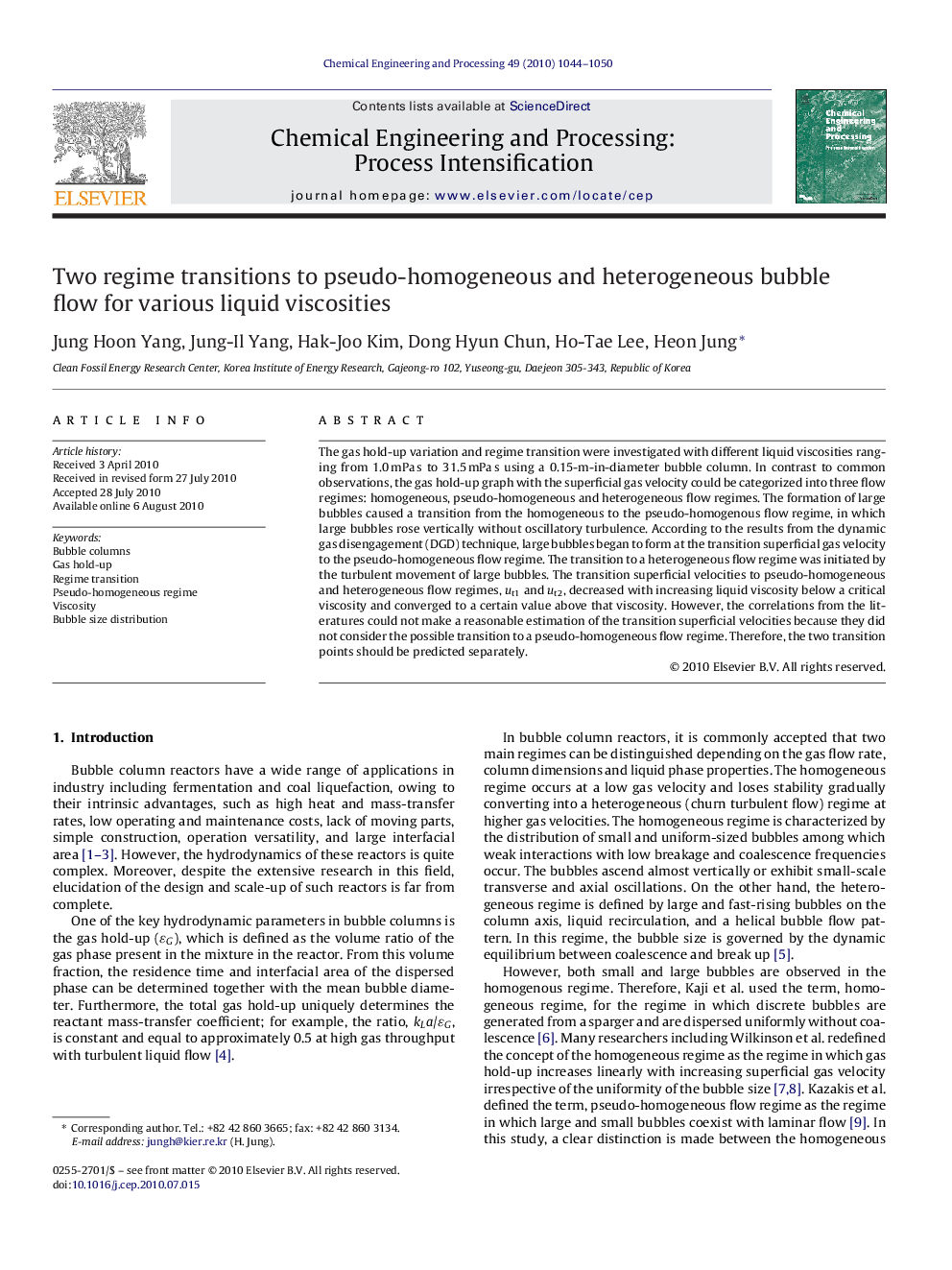| Article ID | Journal | Published Year | Pages | File Type |
|---|---|---|---|---|
| 687870 | Chemical Engineering and Processing: Process Intensification | 2010 | 7 Pages |
The gas hold-up variation and regime transition were investigated with different liquid viscosities ranging from 1.0 mPa s to 31.5 mPa s using a 0.15-m-in-diameter bubble column. In contrast to common observations, the gas hold-up graph with the superficial gas velocity could be categorized into three flow regimes: homogeneous, pseudo-homogeneous and heterogeneous flow regimes. The formation of large bubbles caused a transition from the homogeneous to the pseudo-homogenous flow regime, in which large bubbles rose vertically without oscillatory turbulence. According to the results from the dynamic gas disengagement (DGD) technique, large bubbles began to form at the transition superficial gas velocity to the pseudo-homogeneous flow regime. The transition to a heterogeneous flow regime was initiated by the turbulent movement of large bubbles. The transition superficial velocities to pseudo-homogeneous and heterogeneous flow regimes, ut1 and ut2, decreased with increasing liquid viscosity below a critical viscosity and converged to a certain value above that viscosity. However, the correlations from the literatures could not make a reasonable estimation of the transition superficial velocities because they did not consider the possible transition to a pseudo-homogeneous flow regime. Therefore, the two transition points should be predicted separately.
